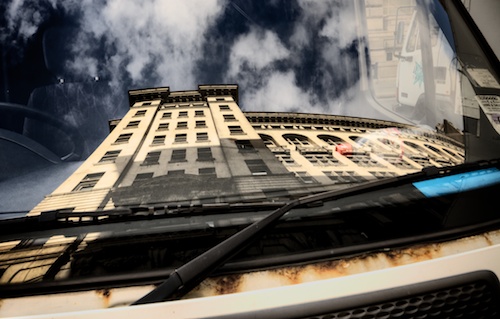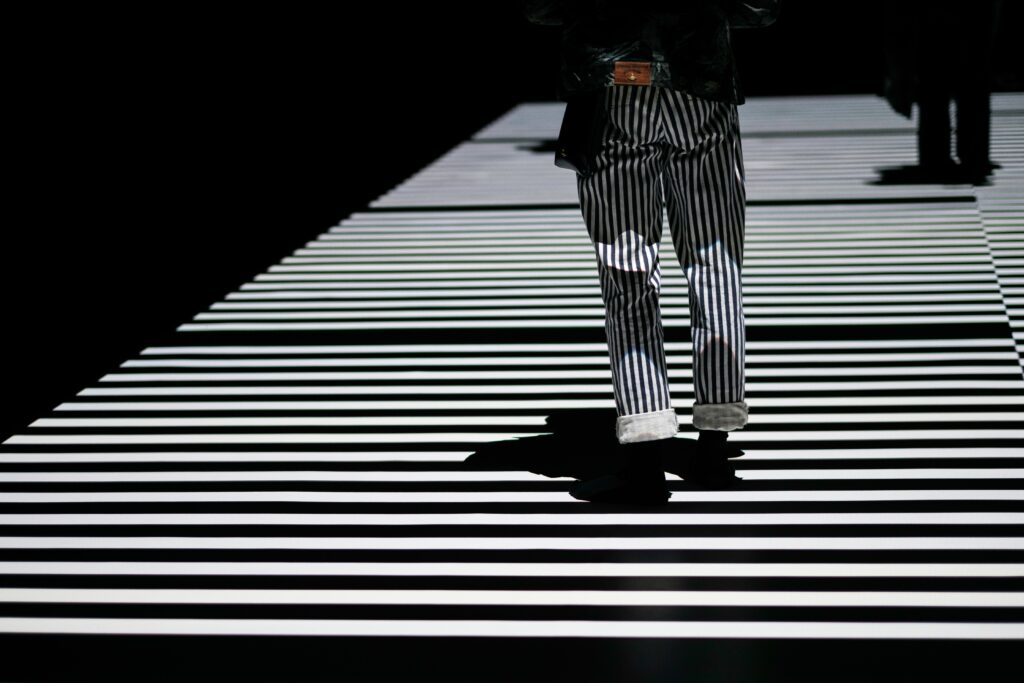We've all been there at some point or another – how do you find a different way to shoot a well-photographed subject?
Reflections & distortions can offer an alternative & interesting viewpoint on even the most familiar of scenes and can add an abstract element to an otherwise ordinary image
As with most aspects of photography, when looking for reflections it is important to look all around you, up and down as well as at street level. Inspiration can grab you at the most unexpected times – I had to dodge buses in a busy main street to get the shot below.
Where You Should Look For Reflections
The most common source of reflections in towns and cities are shop and office windows. As well as being the most common opportunity, windows also offer the advantage of a ready made framing device for shots. The example below shows one of the UK's most photographed scenes, the Liver Buildings on the Liverpool waterfront. The slightly Dali-esque feel from the distorted windows gives a diffferent feel to the photo.
Also look for the reflections available from cars, vans etc. Again, they provide convenient framing and there are normally lots of them around in city centres – their curved nature can provide unusual distortions.
Look for Textures in Reflections Too
It is important not to fall into the trap that glass always has to be perfect to be used in an image. Textured, dirty or broken glass can add a layer of texture that when used correctly will create an image that stands out. The broken glass here was from a cracked windshield on the floor that was reflecting the strong colours of the graffiti.
How to Maximise Reflections
Consider your lens choice when shooting – wide angle lenses are ideal for getting really close to the glass, maximising the reflection and providing great opportunities for symmetry and leading lines. It's important to consider focusing when using a wide angle lens – ensure you have enough depth of field to get the required sharpness for the image.
Lenses with a narrow depth of field can be used to isolate and sharpen certain areas of the reflection whilst blurring the rest of the image.
The above example again shows the ability of reflections to offer a unique perspective – an image that makes the viewer stop and try and work out what is going on. It is a shot of an art installation featuring a glass spider suspended 50ft above the ground that I'd seen from a dozen different perspectives – the puddle allowed me to show it in a different way.
It also shows the part patience has to play when photographing reflections – once I'd spotted the shot I had to guard the puddle from people walking too close to it and disturbing the surface until it had settled down long enough for me to shoot it.
A polarising filter can be used to reduce the strength of a reflection – try experimenting with fading the reflection out – and a graduated density filter can be used to darken the sky and even out an exposure if required.
Once you've started looking for reflections I guarantee you'll see tons – do you have any ideas about using reflections when shooting in the city? If so, please leave a comment below.












3 Comments
Good article, and your pictures are outstanding
Hi Alberto – very kind of you to say so. I’ve been drawn to reflections since I started shooting so I’ve got a fair few examples!
Nice pictures.
How important are reflections in urban photography? This 8 coming from a photography novice.
Thanks